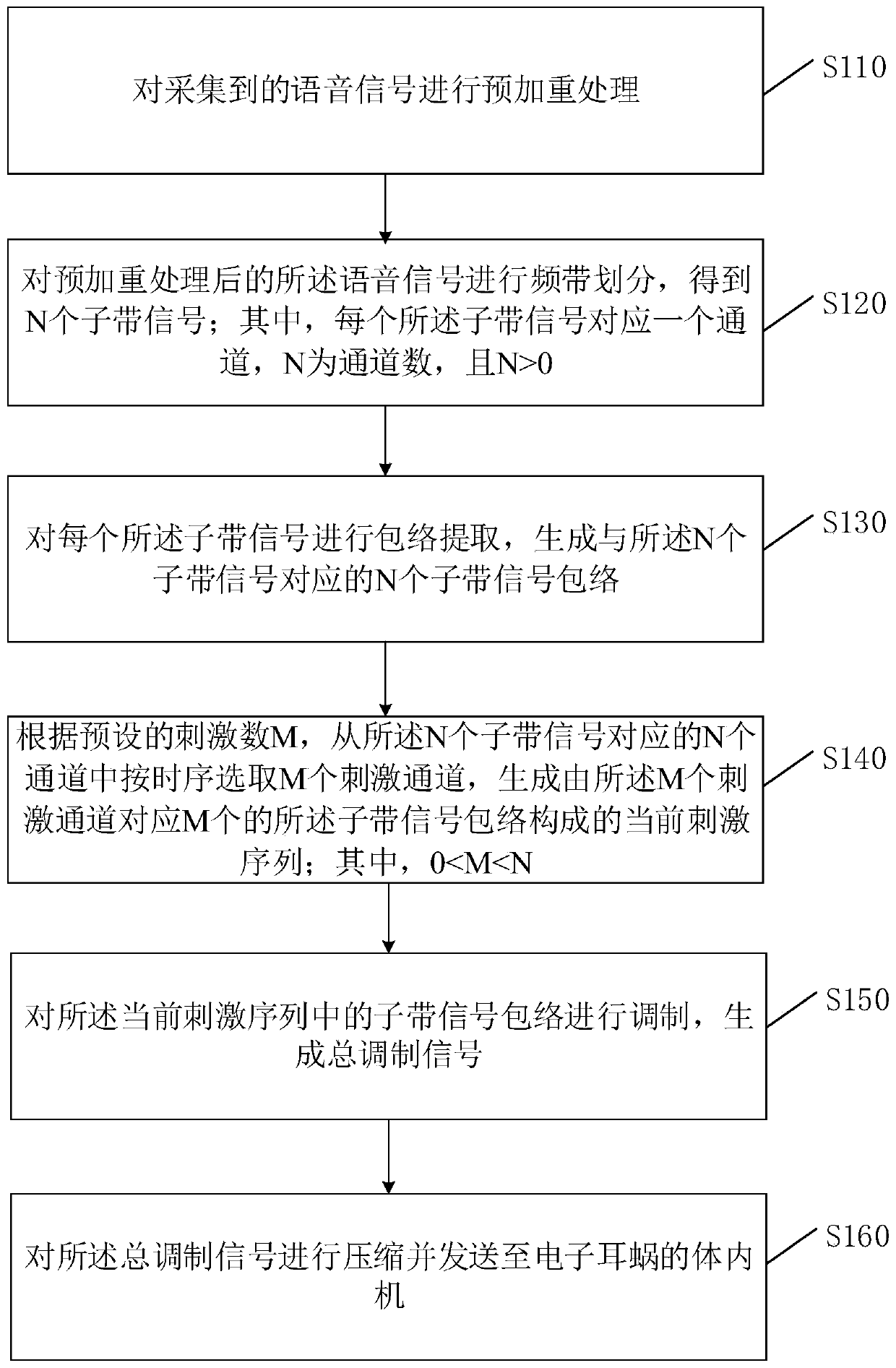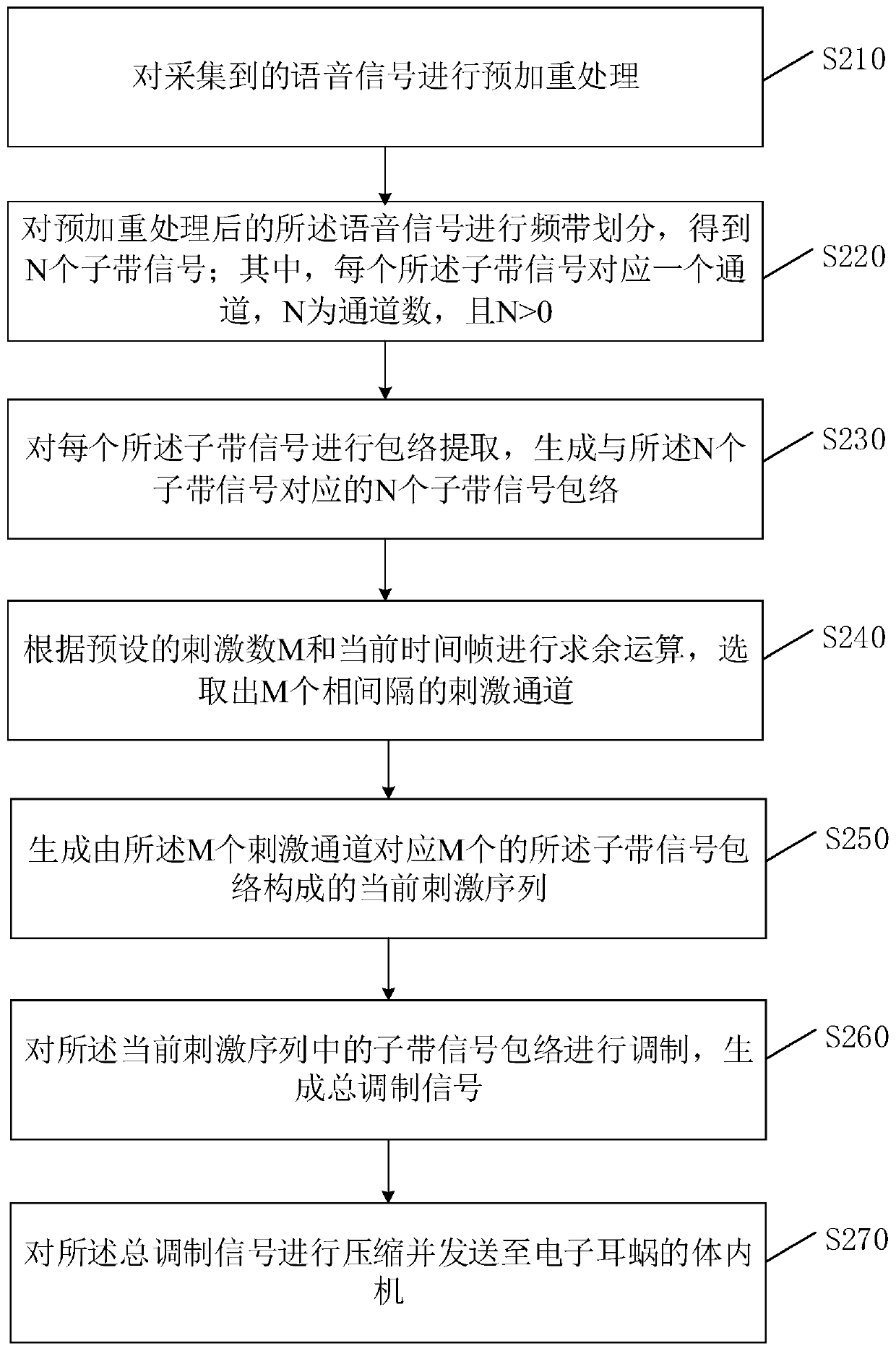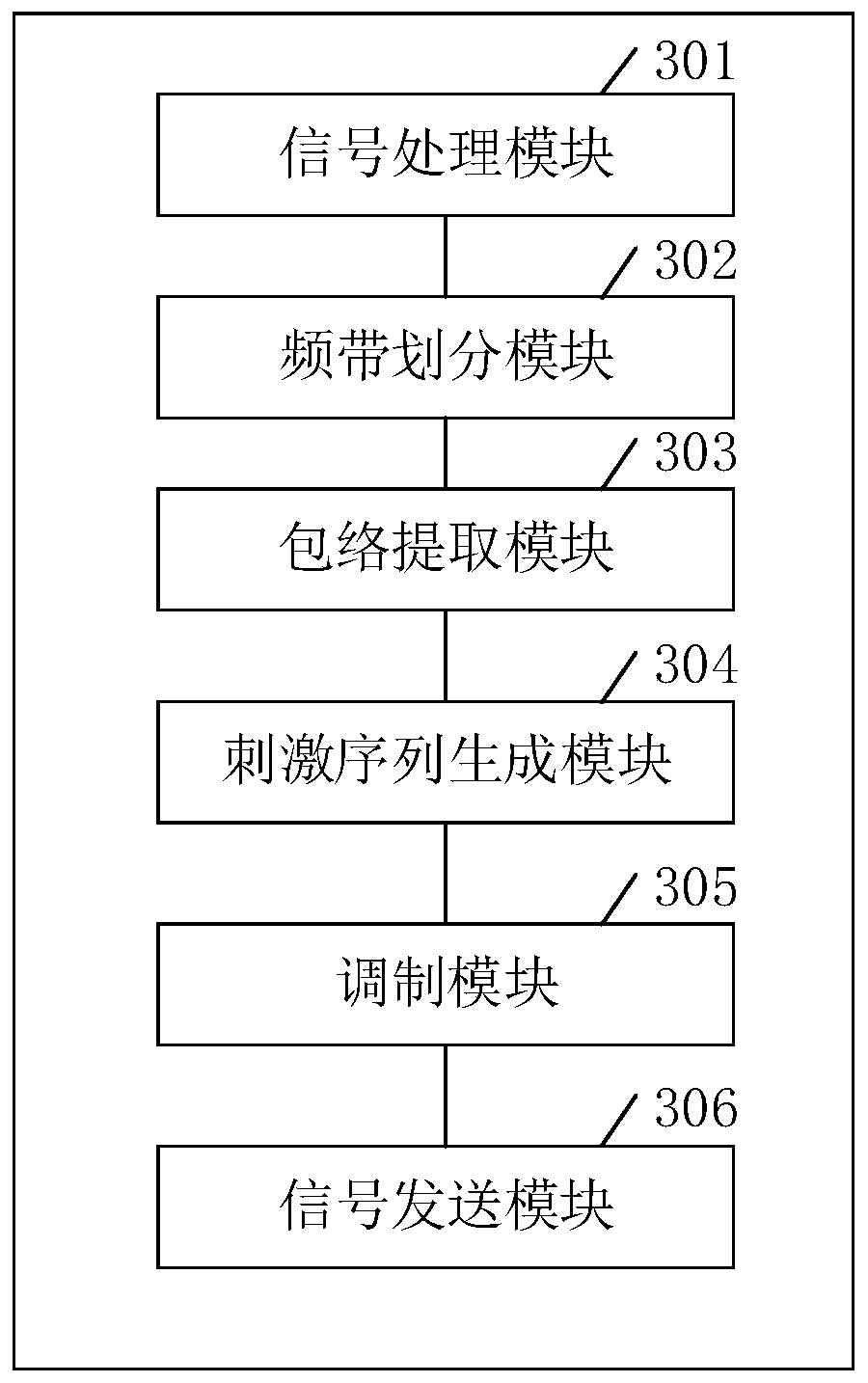Processing method and device for voice signals of cochlear implant
A voice signal, cochlear implant technology, applied in speech analysis, ear therapy, physical therapy, etc., can solve the problems of limited voice information transmission, low voice recognition rate of cochlear implants, etc. Select and avoid the effect of mutual interference
- Summary
- Abstract
- Description
- Claims
- Application Information
AI Technical Summary
Problems solved by technology
Method used
Image
Examples
Embodiment 1
[0048] figure 1It is a schematic flowchart of a method for processing voice signals of a cochlear electronic provided in Embodiment 1 of the present invention. This embodiment is applicable to the process of encoding and transmitting voice signals by an external machine of a cochlear electronic. This method can be executed by a processor. The processing The processor can be configured on a processor on a single-chip microcomputer or a microprocessor of other processing devices. In this embodiment, a processor with a single-chip microcomputer as a carrier is selected as the execution subject. The method specifically includes the following steps:
[0049] S110. Perform pre-emphasis processing on the collected voice signal;
[0050] When the electronic cochlear collects the voice information, the microphone and the front-end signal acquisition circuit of the external machine of the electronic cochlear realize the collection of the voice information and generate the voice signal. ...
Embodiment 2
[0083] figure 2 It is a schematic flowchart of a method for processing a voice signal of a cochlear electronic provided in Embodiment 2 of the present invention. On the basis of Embodiment 1, this embodiment also provides a process of selecting M stimulation channels in time sequence from the N channels corresponding to the N subband signals, so as to ensure that the selected transmission signal channels are spaced apart. The method specifically includes:
[0084] S210. Perform pre-emphasis processing on the collected voice signal;
[0085] S220. Perform frequency band division on the speech signal after pre-emphasis processing to obtain N sub-band signals; wherein, each of the sub-band signals corresponds to a channel, and N is the number of channels, and N>0;
[0086] S230. Perform envelope extraction on each of the subband signals, and generate N subband signal envelopes corresponding to the N subband signals;
[0087] S240. Perform a remainder operation according to th...
Embodiment 3
[0100] Such as image 3 As shown, it is a schematic structural diagram of a processing device for a voice signal of a cochlear electronic device according to an embodiment of the present invention. An embodiment of the present invention provides a device for processing voice signals of a cochlear electronic device, the device comprising:
[0101] The signal processing module 301 is configured to perform pre-emphasis processing on the collected speech signal.
[0102] In one embodiment, when the signal processing module 301 performs pre-emphasis processing on the collected speech signal, the signal processing module further includes:
[0103] a signal conversion unit, configured to convert the pre-emphasized speech signal into a digital signal;
[0104] The signal adjustment unit is configured to perform signal equalization and gain adjustment processing on the digital signal.
[0105] A frequency band division module 302, configured to perform frequency band division on the...
PUM
 Login to View More
Login to View More Abstract
Description
Claims
Application Information
 Login to View More
Login to View More - Generate Ideas
- Intellectual Property
- Life Sciences
- Materials
- Tech Scout
- Unparalleled Data Quality
- Higher Quality Content
- 60% Fewer Hallucinations
Browse by: Latest US Patents, China's latest patents, Technical Efficacy Thesaurus, Application Domain, Technology Topic, Popular Technical Reports.
© 2025 PatSnap. All rights reserved.Legal|Privacy policy|Modern Slavery Act Transparency Statement|Sitemap|About US| Contact US: help@patsnap.com



